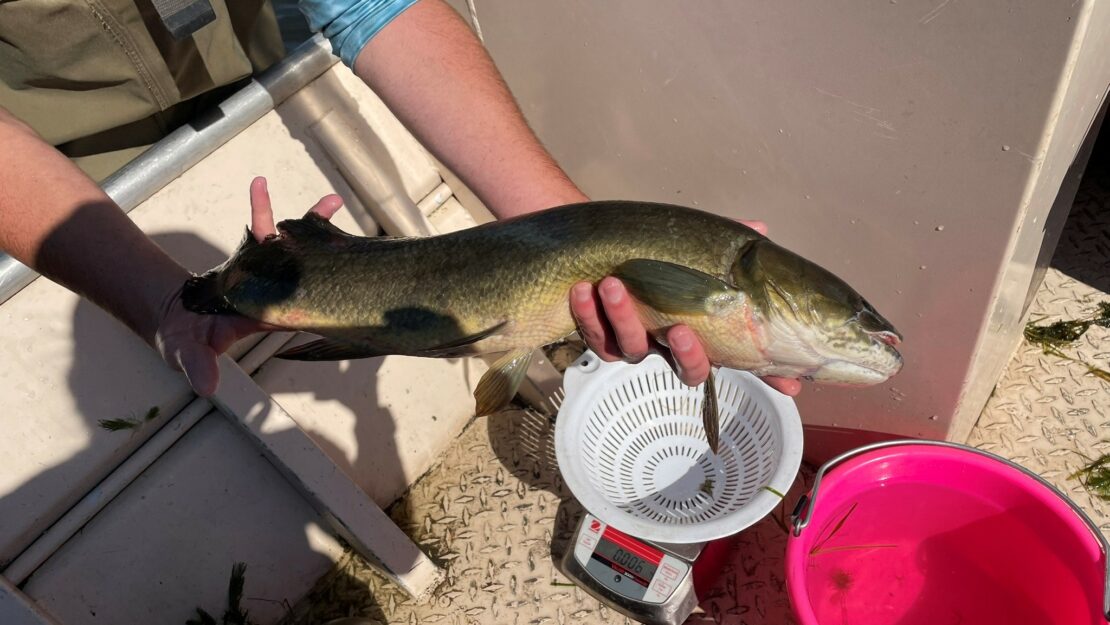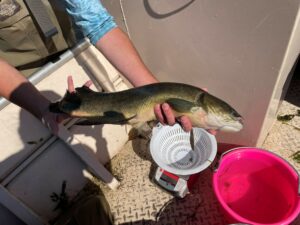Spotlight on Fish-based index of biological integrity

By Ava Schimnowski, Aquatic Plant Management Specialist Individual Placement /AmeriCorps member at Minnesota Department of Natural Resources Division of Fish and Wildlife
Many of us are aware of the many challenges that lakes in Minnesota face – from water pollution to invasive species. From a natural resources management standpoint, monitoring the conditions of the lakes is crucial to making informed management decisions. One measure of a lake’s health is the community of fish, plants and other aquatic life it sustains. Certain species need clean water and abundant habitat to survive, while other species are tolerant of degraded conditions. Both categories of these species are considered “indicators” of the health of the lake. By categorizing these species, an index of biological integrity (IBI) score can be calculated. An IBI score compares the types and numbers of fish, plants or other aquatic life observed in a lake to what is expected for a healthy lake.
In July I had the opportunity to tag along with the fisheries IBI crew to perform a near-shore survey at George Lake in the City of Anoka. A near-shore survey is designed to sample many of the non-game fish species found in a lake and helps give a complete picture of the fish community.

We showed up in the morning suited up in waders and personal flotation devices (PFDs). Our first task was deploying trap nets at various locations around the lake. These are large, underground nets comprised of fine mesh anchored to shore on one end, and a trap made of several compartments with progressively smaller funnel shaped openings between them leading towards the back end of the trap. They were left to sit overnight to collect fish. After setting all the trap nets, we moved onto our next tasks: backpack electrofishing and seine netting.
Backpack electrofishing is performed by one person wearing waders, rubber gloves and the backpack and walking in the shallow water (0-3 ft deep) along the shoreline. The equipment emits an electrical charge into the water that temporarily stuns fish and allows them to be netted. Wearing rubber gloves and waders is crucial to ensuring user safety. Once the fish are collected, they are counted and sorted by species, measured, weighed, and released.

The seine is a 50-foot length of netting mounted to a 5 foot pole on each end (picture a mesh volleyball net). The seine is dragged through the shallow water (0-3 feet) along the shoreline by two people using the poles at each end as a handhold. After a set distance the seine is pulled to shore, and the captured fish are counted and identified. I was surprised by the sheer number of fish these nets pulled in. Some nets yielded thousands of fish, mainly darters (Percidae), minnows (Cyprinidae), and young sunfish.
On the second day, we went around to all our previously deployed trap net locations and pulled them in. Captured fish were counted, measured, weighed, and released. Some bycatch occurred – seven snapping turtles were intensely tangled in a few of the nets. They were likely tempted by the many fish in the net, expecting an easy meal. They put up a good fight as we cautiously removed them from the nets. Once they were free, the carapace was measured, and the turtles were released.

A quality possessed by most natural resources professionals is the passion that drives them to this career. This rings especially true for the fisheries field crews who frequently put in long hours, travel far distances, and work in challenging physical and weather conditions. Equipment failure is common, which requires creative solutions.
Something I hear often from onlookers from the public are comments like “if I had your job I’d never retire” or “you’re so lucky to be on a boat all day!” While fieldwork often is enjoyable, it is important to recognize the extensive knowledge and grit required to work in the natural resources field.
Resources: